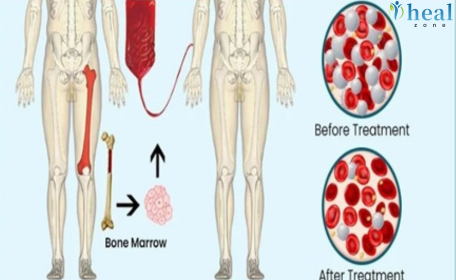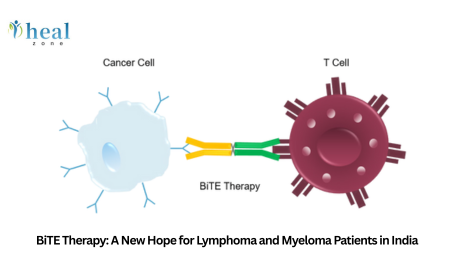Ventriculoperitoneal (VP) shunting is often required when other treatment options for cerebrospinal fluid (CSF) buildup are not effective. This surgery can significantly improve a patient’s quality of life by stabilizing brain pressure and allowing normal neurological function to return. For international patients, India offers the additional advantage of shorter waiting times and comprehensive medical travel support.
The cost of VP Shunt Surgery in India ranges from $3,500 to $7,000 (2,90,000 – 5,80,000), depending on hospital standards, the type of shunt used, and the complexity of the case. India has emerged as a leading medical destination for this procedure because it combines affordable pricing with advanced neurosurgical expertise.
What is VP Shunt Surgery?
A VP shunt is a specialized drainage system designed to manage hydrocephalus — a condition where CSF accumulates within the brain’s ventricles. The shunt is made up of thin tubing connected to a valve that controls the direction and rate of fluid flow.
Unlike temporary drainage systems, a VP shunt is intended for long-term use and is placed entirely under the skin. The upper part of the tubing sits inside the brain’s ventricle, the valve is positioned behind the ear or under the scalp, and the lower tubing travels under the skin to the abdominal cavity. Once installed, the device works continuously to prevent a dangerous rise in intracranial pressure.
When is VP Shunt Surgery Needed?
The decision to place a VP shunt is based on both diagnostic imaging and a patient’s clinical symptoms. It is not limited to one age group — both infants and adults can require this surgery.
Medical conditions that may lead to VP shunt placement include:
- Congenital hydrocephalus: caused by developmental abnormalities in the fetal brain.
- Post-hemorrhagic hydrocephalus: often after a brain bleed in premature infants.
- Obstructive hydrocephalus: due to tumors blocking the normal CSF pathway
- Normal Pressure Hydrocephalus (NPH): in older adults, presenting with gait changes, memory issues, and bladder problems.
- Post-infectious hydrocephalus: after severe meningitis or encephalitis.
By relieving pressure, the shunt can prevent deterioration in movement, cognition, and vision, and in severe cases, it can be lifesaving.
How is VP Shunt Surgery Performed?
The neurosurgical team performs VP shunt surgery in a sterile, fully equipped operating theatre. The entire process follows a structured sequence to ensure safety and precision.
- Administering Anesthesia: The anesthesiologist puts the patient under general anesthesia so they remain unconscious and pain-free during the procedure.
- Positioning the Patient: The surgical team positions the patient to provide optimal access to both the head and the abdomen.
- Preparing Surgical Sites: The surgeon shaves and sterilizes small areas of the scalp and abdomen to create two entry points for the shunt.
- Gaining Access to the Ventricle: The neurosurgeon makes a small incision on the scalp and drills a tiny opening in the skull to reach the brain’s ventricle.
- Inserting the Proximal Catheter: The surgeon carefully places a thin, flexible tube into the ventricle, ensuring it sits at the correct depth to drain cerebrospinal fluid (CSF).
- Attaching the Valve Mechanism: The proximal catheter connects to a pressure-regulating valve, which controls the rate of CSF flow and prevents backflow.
- Creating a Subcutaneous Tunnel: The surgeon passes a tunneling device under the skin from the head to the abdomen to guide the distal catheter into place.
- Placing the Distal Catheter: The lower end of the shunt is inserted into the peritoneal cavity in the abdomen, where the excess CSF will be naturally absorbed.
- Testing the Shunt: Before closing the incisions, the surgeon checks the system to confirm fluid flows correctly and the valve functions properly.
- Closing the Incisions: The surgical team closes both the scalp and abdominal incisions with sutures or staples and applies sterile dressings.
The procedure typically takes one to two hours. After surgery, the patient moves to a recovery area or ICU for close monitoring, ensuring the shunt works effectively and no immediate complications occur.
What are the Different Types of VP Shunts?
Neurosurgeons choose the type of VP shunt based on the patient’s diagnosis, age, long-term care needs, and the likelihood of pressure changes in the brain over time. Each type has unique design features and advantages.
- Fixed-Pressure Shunts: The surgeon selects a fixed-pressure shunt when a consistent drainage rate is required. These shunts have a pre-set valve that allows cerebrospinal fluid (CSF) to flow at a fixed speed. They are simpler in design, less expensive, and effective for patients whose CSF pressure is unlikely to change significantly.
- Programmable Shunts: A programmable shunt allows the surgeon to adjust the drainage pressure after surgery without performing another operation. The adjustment is made using a magnetic device placed on the skin above the valve. This flexibility is ideal for patients whose intracranial pressure may change over time, such as children who are still growing or patients with fluctuating symptoms.
- Gravitational or Anti-Siphon Shunts: Gravitational shunts are designed to prevent over-drainage when the patient is upright. In a standing position, gravity can sometimes cause excessive CSF drainage, leading to headaches and other issues. This type of shunt uses a gravity-sensitive mechanism to keep the drainage rate stable regardless of posture.
- Antibiotic-Impregnated Shunts: In patients at higher risk of infection, surgeons may use shunts coated with antibiotics. This coating reduces the likelihood of bacterial growth on the shunt surface during the early recovery period. They are particularly useful in pediatric cases or for patients with a history of shunt infections.
Choosing the Right Type
The selection depends on multiple factors—the patient’s medical history, risk of infection, expected lifestyle, and budget. A programmable shunt may offer long-term convenience but comes at a higher cost, while a fixed-pressure shunt may be more suitable for patients with stable pressure needs. The neurosurgeon discusses these options with the patient and family to ensure the chosen shunt meets both medical and practical requirements.
Average Cost of VP Shunt Surgery in India
The average cost of VP Shunt Surgery in India ranges from $3,500 to $7,000 (?2,90,000 – ?5,80,000). The price varies according to the type of shunt used, hospital facilities, city of treatment, neurosurgeon’s expertise, and whether the case involves additional complications such as infection, tumor removal, or emergency surgery.
Patients can choose between fixed-pressure shunts and programmable shunts, with the latter costing more due to their adjustable valve mechanism.
| Expense Category | Estimated Cost (USD) | Estimated Cost (INR) |
| Pre-surgery Investigations (MRI, CT, Blood Tests) | $300 – $500 | 25,000 – 40,000 |
| Surgeon’s Fee | $1,200 – $2,000 | 1,00,000 – 1,60,000 |
| Shunt Device – Standard | $800 – $1,200 | 65,000 – 1,00,000 |
| Shunt Device – Programmable | $1,500 – $2,500 | 1,25,000 – 2,00,000 |
| Anesthesia Charges | $250 – $400 | 20,000 – 33,000 |
| Hospital Stay (5–7 Days) | $800 – $1,500 | 65,000 – 1,20,000 |
| Medications & Consumables | $200 – $300 | 16,000 – 25,000 |
| Total Estimated Cost | $3,500 – $7,000 | 2,90,000 – 5,80,000 |
Tip for International Patients: India offers the same procedure at 70–80% lower cost than countries like the USA or UK, while maintaining international healthcare standards. Many hospitals provide fixed-cost packages that cover the surgery, hospital stay, and essential post-operative care, reducing the risk of unexpected expenses.
Inclusions in VP Shunt Surgery Package
A standard VP shunt surgery package in India typically covers:
- Preoperative consultations and routine diagnostic tests required for surgery.
- Fees for the neurosurgeon, assistant surgeons, and anesthesiologist.
- The VP shunt device (standard or programmable, as specified in the package).
- Operation theatre and anesthesia charges.
- ICU and ward accommodation for the agreed duration of stay.
- Nursing care, routine medications, and consumables used during hospitalization.
- One set of postoperative follow-up consultations before discharge.
Exclusions from the Package
The following costs are usually not included in the base package and are billed separately:
- Treatment or monitoring for unrelated medical conditions during hospitalization.
- Extended ICU or ward stay beyond the agreed package duration.
- Use of specialized or upgraded shunt systems is not included in the chosen package.
- Additional surgeries such as shunt revisions or infection management.
- Non-medical charges like attendant meals, extra bedding, or private nursing.
- Follow-up consultations and investigations after the discharge period specified in the package.
Cost Comparison – India vs Other Countries
International patients often evaluate multiple destinations for VP shunt surgery. The table below shows typical self-pay ranges for an uncomplicated primary VP shunt procedure in accredited hospitals. Values are indicative and may vary by city, device type (fixed vs programmable), and hospital category.
| Country/Region | Typical Self?Pay Range (USD) | Notes on What Usually Drives Price |
| India | $3,500 – $7,000 | Lower device and facility charges; high case volumes; packages often include routine tests, surgeon fee, device, and 5–7 day stay. |
| Thailand | $8,000 – $12,000 | Popular for medical tourism; pricing influenced by international wards and bundled services. |
| Turkey | $7,000 – $11,000 | Competitive private sector; cost varies by hospital brand and shunt selection. |
| Singapore | $15,000 – $20,000 | Premium tertiary centers; higher OR, ICU, and device costs. |
| UAE | $14,000 – $22,000 | Modern facilities; pricing reflects higher overheads and expat-focused services. |
| UK (Private) | $18,000 – $25,000 | Consultant-led care; device and inpatient tariffs drive cost. |
| USA | $25,000 – $40,000+ | Highest OR/ICU tariffs; wide variance by insurer, city, and hospital network. |
| Total Estimated Cost | $3,500 – $7,000 | ?2,90,000 – ?5,80,000 |
- Device choice matters: Programmable, antibiotic-impregnated, or gravitational valves add to the cost in every country.
- Case complexity changes everything: Revisions, infections, tumor-related hydrocephalus, or extended ICU care can raise the final bill well beyond the ranges shown.
- Bundles differ by country: India and Thailand commonly offer fixed-cost surgical packages (pre-op tests, surgeon, anesthesia, standard device, ward/ICU bed, basic meds). The USA/UK private market more often itemizes each component.
- Travel budgeting: International patients should add flights, visa, local stay for attendants, and post-op follow-ups to compare actual end-to-end expense.
What are the Factors Affecting VP Shunt Surgery Cost in India?
The price of VP shunt surgery is not fixed and can vary significantly from one patient to another. Several medical and non-medical factors determine the final cost. Understanding these elements helps patients plan their treatment budget more accurately.
- Type of Shunt Chosen: Fixed-Pressure Shunts are less expensive but have limited adjustability. Programmable Shunts cost more because they offer pressure adjustment without repeat surgery. Specialized options such as antibiotic-coated shunts or gravitational shunts also add to the price.
- Hospital Category and Facilities: Premium multispecialty hospitals in metro cities charge more due to advanced ICU setups, private rooms, and high-end imaging facilities. Mid-range accredited hospitals may offer the same surgical expertise at a lower price.
- Neurosurgeon’s Experience: Surgeons with extensive experience in pediatric and adult hydrocephalus cases often charge higher fees, reflecting their expertise and track record of successful outcomes.
- Complexity of the Case: Emergency surgeries, revision surgeries, or cases with infection/tumor removal take more time and resources, increasing the cost. Complex anatomy in pediatric or post-trauma cases may require special shunt systems.
- Duration of Hospital Stay: Standard recovery requires 5–7 days in the hospital. Complications, extended monitoring, or ICU admission can increase the length of stay and add to costs.
- Additional Medical Requirements: Pre-existing medical conditions such as diabetes, heart disease, or kidney problems may require extra preoperative tests and post-surgical monitoring. Additional medications, physiotherapy, or follow-up imaging also influence the total expense.
- City of Treatment: Hospitals in cities like Delhi, Mumbai, and Bangalore usually have higher treatment costs compared to those in tier-2 cities due to operational expenses and demand for specialized services.
Why Choose India for VP Shunt Surgery?
India has become a preferred destination for VP shunt surgery because it offers a rare combination of world-class neurosurgical care, advanced technology, and cost efficiency. Patients from both within the country and abroad benefit from the high standards maintained by leading hospitals.
Key Advantages:
- Expert Neurosurgeons: Many Indian neurosurgeons are internationally trained and have extensive experience handling complex pediatric and adult hydrocephalus cases.
- Advanced Hospital Infrastructure: Modern operating theatres, high-end neuro-imaging systems, and dedicated neurosurgical ICUs ensure safe and precise surgeries.
- Cost-Effectiveness: Even with top-tier facilities and skilled surgeons, treatment in India costs a fraction of what is charged in Western countries.
- Diverse Shunt Options: Hospitals stock a range of shunt systems, including fixed-pressure, programmable, antibiotic-coated, and gravitational types, allowing personalized treatment planning.
- Fast Access to Surgery: Short waiting times mean patients can receive urgent or elective procedures without delay, which is especially critical in hydrocephalus cases.
- Integrated Patient Support: Many hospitals offer language assistance, visa facilitation, and dedicated care coordinators for international patients.
- High Success Rates: Consistently strong clinical outcomes and adherence to international safety protocols provide reassurance to patients and families.
What are the Services Available for International Patients?
Hospitals in India that perform VP shunt surgery provide comprehensive assistance to make the treatment journey smooth for overseas patients. These services ensure comfort, clear communication, and logistical convenience from arrival to recovery.
Key Support Services Include:
- Dedicated International Patient Desk: A single point of contact for scheduling appointments, arranging tests, and coordinating hospital services.
- Medical Visa Assistance: Guidance and documentation support to help patients and attendants obtain medical visas quickly.
- Airport Transfers: Pick-up and drop-off services between the airport, hospital, and accommodation.
- Language Interpretation: Translators for languages such as Arabic, French, Russian, Swahili, and more to ensure clear communication during consultations and hospital stays.
- Accommodation Arrangements: Assistance in booking hotels, guesthouses, or serviced apartments near the hospital for attendants or family members.
- Dietary and Cultural Support: Customized meal plans and culturally sensitive care to make patients feel at home.
- Post-Treatment Follow-Up: Telemedicine consultations to monitor recovery after returning to the home country.
- Travel Coordination: Help with local transportation, SIM cards, and guidance for daily needs during the stay.
With these support systems, international patients can focus entirely on their treatment and recovery, knowing that their medical and non-medical needs are being taken care of.
What is the Success Rate of VP Shunt Surgery in India?
VP shunt surgery in India achieves a success rate of around 85–90% in effectively managing hydrocephalus and preventing its complications. Success is measured by improvement in symptoms, stabilization of brain pressure, and reduction in ventricular size on imaging.
Factors Contributing to High Success Rates in India
- Experienced Neurosurgeons: Many surgeons performing this procedure have advanced training in pediatric and adult hydrocephalus management.
- Modern Shunt Technology: Access to programmable, antibiotic-impregnated, and gravitational shunts increases long-term reliability.
- High-Quality Imaging & Diagnostics: Precise preoperative planning helps position the shunt accurately and reduce revision rates.
- Postoperative Monitoring Protocols: Indian hospitals maintain strict infection-control measures and scheduled follow-ups.
Outcome Overview
- Symptom Relief: Most patients experience a noticeable improvement in headaches, balance, vision, and cognitive function within days to weeks.
- Long-Term Function: Many shunts work effectively for years, though occasional revision may be needed due to blockage, infection, or growth-related adjustments in children.
- Low Complication Rates: With proper care, the risk of infection or mechanical failure is significantly reduced compared to global averages.
Patients who adhere to follow-up schedules and promptly report any symptoms of malfunction tend to have the most stable, long-term results.
Recovery After VP Shunt Surgery
Recovery from VP shunt surgery involves both hospital-based care and home-based rehabilitation to ensure the shunt functions correctly and the patient adapts to it.
Hospital Recovery Phase (5–7 days):
- The medical team monitors the patient in the ICU for the first 24–48 hours to assess neurological function and shunt performance.
- Pain management, antibiotics (if needed), and fluid balance monitoring are provided to reduce complications.
- The surgical wounds on the scalp and abdomen are checked daily for signs of infection or leakage.
- Once the patient is stable, they are moved to a general ward to continue observation and begin gentle movement.
Early Home Recovery (First 4 weeks):
- The patient avoids heavy lifting, bending forward, or strenuous activity to prevent pressure changes.
- Wound care instructions are followed strictly, and stitches or staples are removed during a scheduled follow-up visit.
- Any signs of shunt malfunction (such as severe headaches, vomiting, fever, or confusion) require immediate hospital contact.
Long-Term Adjustment (1–6 months):
- Most patients gradually return to normal daily activities within 4–6 weeks.
- Regular follow-ups with CT or MRI scans confirm that the ventricles remain at a safe size.
- Children with VP shunts are monitored for growth-related adjustments, especially if using a programmable device.
- Adults with programmable shunts may require occasional pressure setting changes to maintain optimal brain pressure.
With proper care and scheduled monitoring, many patients live an everyday, active life after VP shunt placement.
Who is the Best Doctor for VP Shunt Surgery in India?
When it comes to VP shunt surgery for hydrocephalus, Dr. Sandeep Vaishya is regarded as one of the best neurosurgeons in India. With over 30 years of post-MBBS experience in advanced neurosurgery, he has successfully treated thousands of patients, including complex pediatric and adult hydrocephalus cases.
As the Director of Neurosurgery at Fortis Memorial Research Institute (FMRI), Gurgaon, Dr. Vaishya combines deep surgical expertise with a patient-first approach. He is proficient in both fixed-pressure and programmable VP shunt systems, revision surgeries, and minimally invasive techniques that reduce recovery time and complications.
Patients from across India and abroad seek his care because of:
- Proven Surgical Excellence: High success rates in VP shunt procedures for different types of hydrocephalus.
- Advanced Technology Access: Operates in one of India’s most advanced neurosurgical facilities with modern imaging and ICU support.
- Global Trust: Widely chosen by international patients for his expertise, transparent communication, and compassionate approach.














